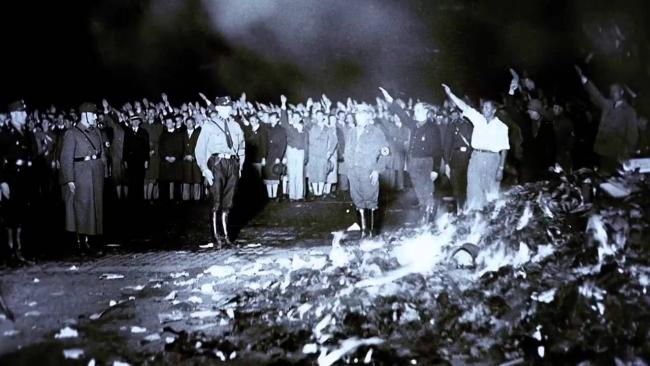Screenshot from Nazi Book Burning from the United States Holocaust Memorial Museum on YouTube
Life went on while Hitler consolidated power
On 30 January 1933, as Gerhard and Ilse contemplated marriage, Hitler became Chancellor; the Third Reich had been established.
Within days of his election, Hitler set about dismantling all the constitutional safeguards of democracy to give establish totalitarian one-party rule, fascism. The speed with which Hitler brought in his repressive measures indicate how well prepared his party was.
On 27 February, the Reichstag was set ablaze by the Nazis in a pretext to suspend basic civil liberties. In March, the first concentration camps were set up in Dachau near Munich and Orarienburg on the outskirts of Berlin.
In April, the nationwide boycott of Jewish businesses went into effect, hitting close to home at the Feidt family livelihood. The details of a frightening visit by the Gestapo to the Kaufhaus premises is recounted elsewhere.
On 11 April, a law excluding Jews from the professional civil service addressed for the first time the question of who was and was not a Jew, a Nazi obsession that would culminate three years later in the Nuremberg race laws.
By the beginning of May Jews were denied entry to public sports fields, gymnasiums and youth centres. On May 11, stormtroopers under Himmler and Geobbels carried out the infamous book burning at the Babelsplatz.
Despite all the foreboding signs, Gerhard and Ilse were determined that love would conquer all. They went on with plans for their non-denominational wedding. The date was now set for 6 June 1933.

